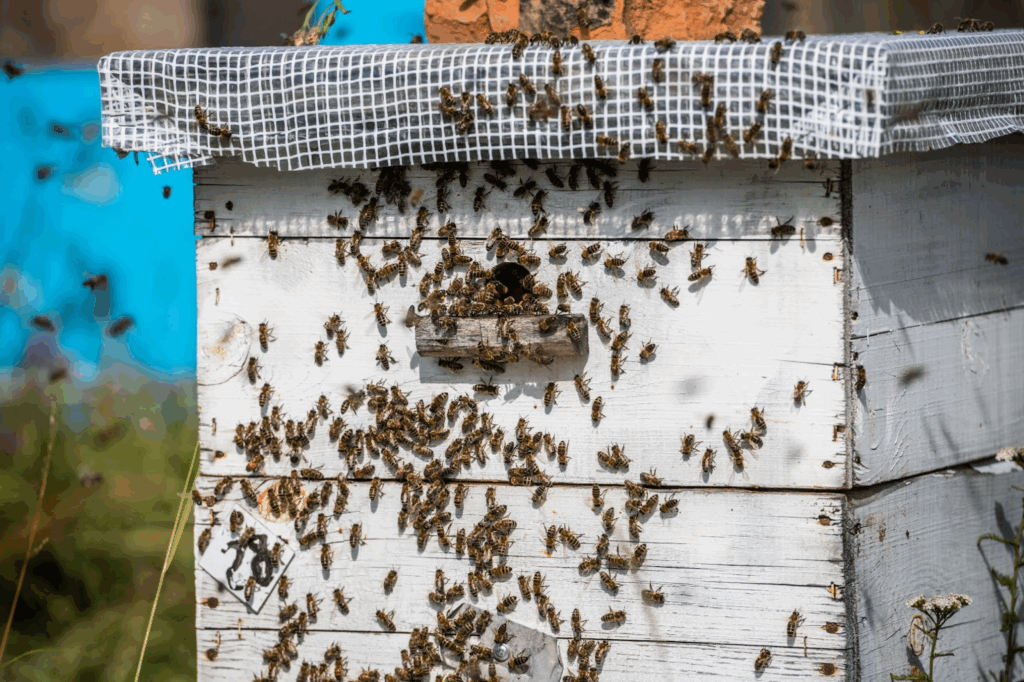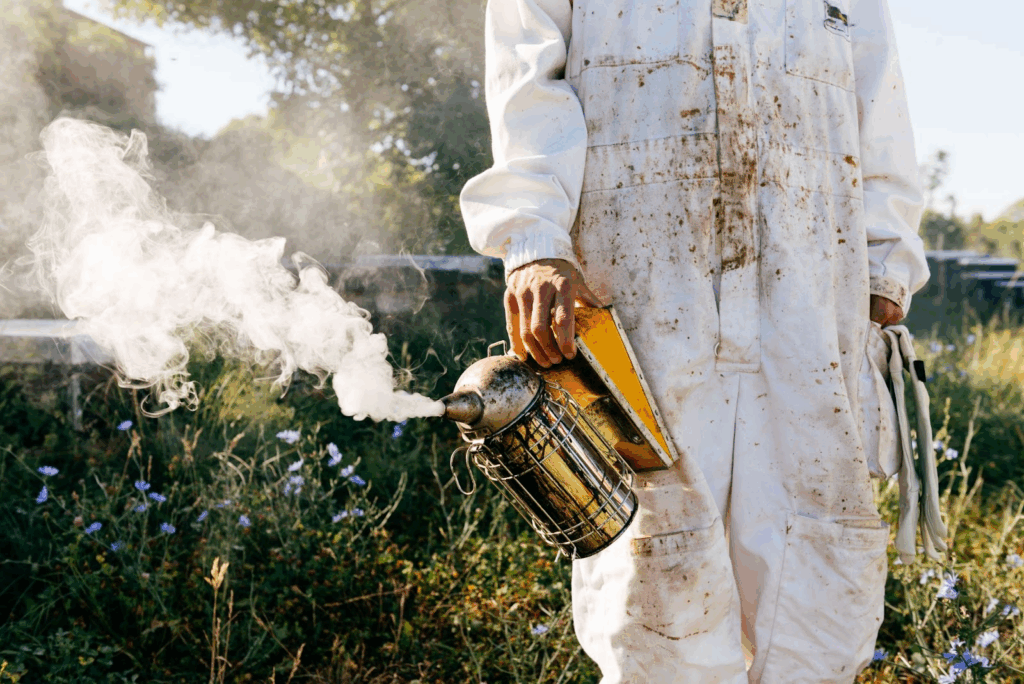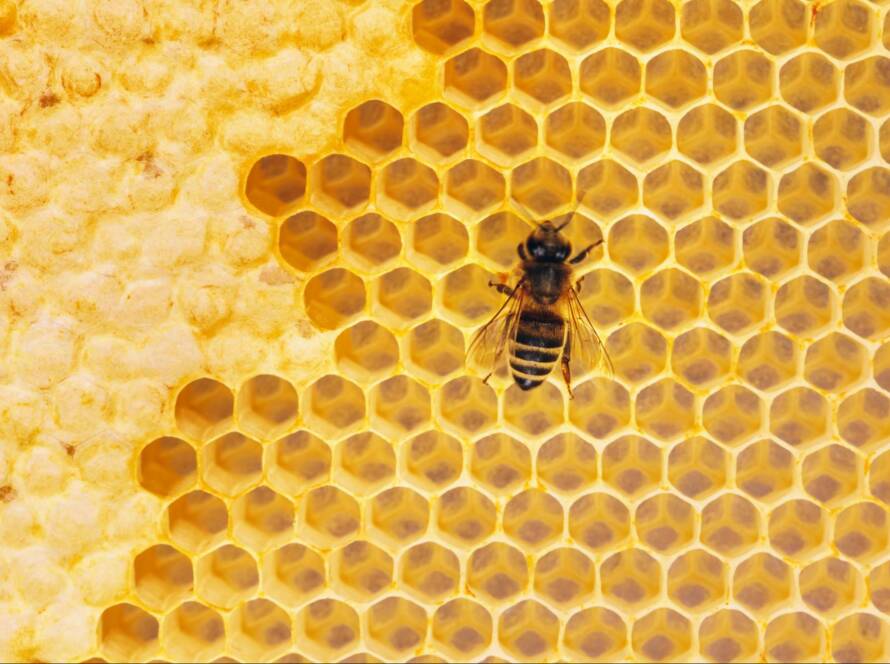Bee infestations can quickly disrupt daily life, pose a threat to safety, and cause significant damage. Many property owners react by calling exterminators, assuming it’s the only solution. However, extermination and removal differ; choosing the wrong one can lead to long-term problems. Understanding the difference helps you act wisely, protect your space, and support the environment.
What Is Beehive Removal and Why Does it Matter
Beehive removal is relocating a live bee colony without harming the bees or damaging the structure. Professionals carefully extract the hive, move it to a safe location, and clean the affected area. This humane approach protects pollinators and properties, making it the preferred option in many residential and commercial settings. It also aligns with growing environmental regulations in many U.S. cities.
Safe Relocation Protects Bees and Property
Bee removal experts use specialized tools like vacuums, smoke, and soft brushes to extract the hive without killing the bees. The hive is then relocated to an apiary or conservation site where the colony can continue pollinating. Afterward, professionals clean and sanitize the area, removing all traces of wax and honey to deter new swarms. Sealing gaps and entry points ensures bees won’t return to the same spot. This process provides a complete solution, not just a temporary fix. It supports ecological health while protecting your investment.
Ideal Conditions for Choosing Beehive Removal
Beehive removal works best when bees are calm, accessible, and not deeply embedded in a structure. Early detection is key—swarms on trees, fences, or sheds are easier to remove than those inside walls or attics. Many regions also legally require removal when dealing with native or protected bee species. Property owners who prioritize safety and sustainability often choose this method. Businesses concerned with public perception may also prefer live removal for reputational reasons. It’s both practical and ethically responsible.
Long-Term Value of Choosing Removal Services
Choosing beehive removal reduces the chances of structural rot, lingering odors, and future infestations. Live removal ensures that all materials, like wax, honey, and scent trails, are removed to discourage other bees. Many removal services also offer sealing and prevention plans as part of the package. Over time, this reduces the need for costly repairs or pest control treatments. Removal supports long-term property health while lowering liability risks. It’s a proactive solution that addresses both immediate and future concerns.
What Bee Extermination Really Involves
Bee extermination kills an entire colony using chemicals, dusts, or aerosols. It’s often used when hives are buried in hard-to-reach places or when the bees are aggressive. While it may appear quicker and cheaper, extermination usually leaves behind materials that decay and attract pests. This method should be a last resort, not the default response.
How Bee Extermination Works
Exterminators inject pesticides or foams into the hive cavity, killing the bees. Once treatment is complete, the entry point is usually sealed, but the hive often remains. The dead bees, wax, and honey can rot and cause strong odors or mold if not removed. These conditions attract ants, roaches, and rodents, leading to secondary infestations. Extermination does not include complete cleanup unless specifically requested. Many property owners are surprised by the aftermath and extra costs.
When Extermination Is Unavoidable
Extermination may be necessary if the bees are attacking people, causing allergic reactions, or nesting deep in walls, ceilings, or foundations. Aggressive colonies or hives behind thick building materials pose high safety risks for removal. In such cases, applying pesticides becomes the safer option for all involved. Even then, it’s essential to have professionals evaluate if partial removal is possible first. Extermination should always follow a clear risk assessment. Skipping this step can result in legal or property complications.

Health, Environmental, and Legal Drawbacks
Extermination introduces chemicals that can linger indoors and pose health risks to people and pets. Children and allergy-prone individuals are especially vulnerable to pesticide exposure. Legally, some bee species are protected under local wildlife regulations, and killing them without permits may result in fines. From an environmental standpoint, extermination contributes to the ongoing decline in bee populations, which affects pollination and agriculture. Public opinion is also shifting away from chemical pest solutions. Property owners are increasingly held accountable for being eco-conscious
decisions.
Beehive Removal vs. Extermination Compared
The core difference lies in how the problem is solved—removal relocates, extermination destroys. Each method carries different risks, costs, and long-term effects on your property. Understanding their differences helps you protect your investment and meet legal or environmental responsibilities. It also enables you to avoid making costly decisions based on urgency or misinformation.
Process and Outcome Differences
Beehive removal includes safe extraction, relocation, cleanup, and prevention. Extermination often ends with killing the bees and sealing the hive, leaving behind organic material. Removal is cleaner and more complete, while extermination leaves room for future issues. Hives left inside walls can cause rot, mold, and pest infestations. Over time, removal proves more effective and less disruptive. It offers peace of mind without long-term mess.
Financial and Structural Impacts
While removal may cost more upfront, it includes more services that prevent future damage. Extermination might appear cheaper, but hidden costs arise when dealing with dead hives, insects, or moisture damage. Removal helps avoid repairs to drywall, insulation, or wood framing later. Also, insurance policies are more likely to support preventative and humane approaches. You save money in the long run by choosing a more complete service. Responsible property maintenance always pays off.
Health and Safety for Occupants
Live removal avoids harsh chemicals, keeping indoor air safe for people and pets. In contrast, pesticide treatments may leave harmful residues that affect indoor air quality. It is a critical concern for schools, restaurants, and health clinics. Families with small children also benefit from avoiding chemical exposure. Bee hive removal uses safer, targeted methods that reduce risk. It protects both the building and the people inside.
Choosing the Right Bee Service for Your Property
Your choice between removal and extermination depends on hive location, bee behavior, and property type. Consultation with trained professionals gives you the best plan of action. Taking the right step at the right time protects your structure and those inside. It also helps you avoid future infestations and legal troubles.

Evaluate the Bees and Their Behavior
Watch how the bees move and where they’re going in and out. Calm bees clustered in visible spots may indicate a swarm, not a hive. Aggressive bees or those entering hidden wall voids suggest deeper infestations. Swarms can often be removed live, but established colonies in walls may pose safety risks. Behavior and location help determine the safest and most effective solution. A professional inspection confirms what’s possible.
What to Ask a Bee Removal Professional
Before hiring, ask if they specialize in live removal or extermination. Request proof of licensing, insurance, and cleanup procedures included in the service. Determine whether they collaborate with beekeepers or wildlife agencies for relocation. Make sure they offer sealing and prevention services after removal. Discuss turnaround time, pricing, and guarantees on their work. That protects you from incomplete services or hidden fees.
Preventing New Infestations
After resolving the current hive, prevention becomes key. Seal any gaps, cracks, or holes that could allow bees to reenter. Remove leftover honeycomb and apply repellents if advised. Trim trees and clean outdoor clutter that might attract swarms. Annual inspections in warm months help detect problems early. Keeping your property sealed and clean is the best defense against pests.
Why Beehive Removal Should Be Your First Option
Beehive removal offers long-term protection, safety, and environmental responsibility in one service. It helps property owners avoid chemical exposure, legal risks, and costly repairs. Removal also supports pollinators that our food systems rely on. Choosing removal reflects care for your building and your broader community.
Supports Pollinators and Public Reputation
By choosing removal, you contribute to the survival of bees that pollinate crops and plants. Businesses benefit from showing commitment to sustainable, eco-friendly services. In many industries, customer trust increases when companies act responsibly. Residential owners can also feel good knowing they’ve made a safer choice. It’s a small decision that makes a visible impact. The public notices when property owners do the right thing.
Avoids Damage and Liability
Dead bees, honey, and wax from extermination can damage walls, ceilings, and insulation. Moisture causes rot, and the smell attracts rodents or other pests. Removal eliminates all materials and includes sealing to prevent recurrence. You save money and avoid legal claims or health complaints. Proper removal protects your investment, whether you own or rent out the space. It also keeps your tenants or family safe and comfortable.
Stop Hive Growth With the Right Beehive Removal Plan
The longer a hive stays, the deeper the risks go—inside your walls, wiring, and peace of mind. Beehive removal offers the cleanest break from the problem without harming what matters. It’s a straightforward fix with long-term payoff. Get ahead now and protect what you’ve built before the hive does more than buzz.
Curious how pests behave before they invade your space? Get expert insights, real case stories, and prevention tips on the Thrash Pest Control blog.



